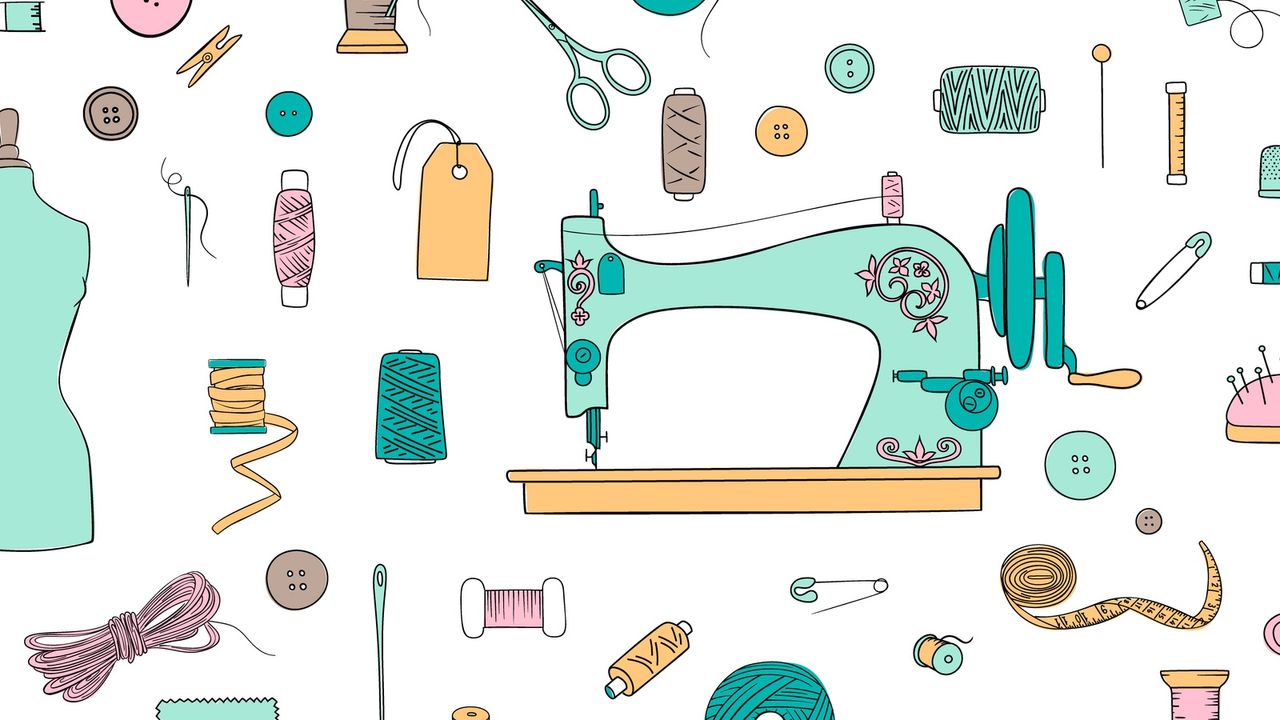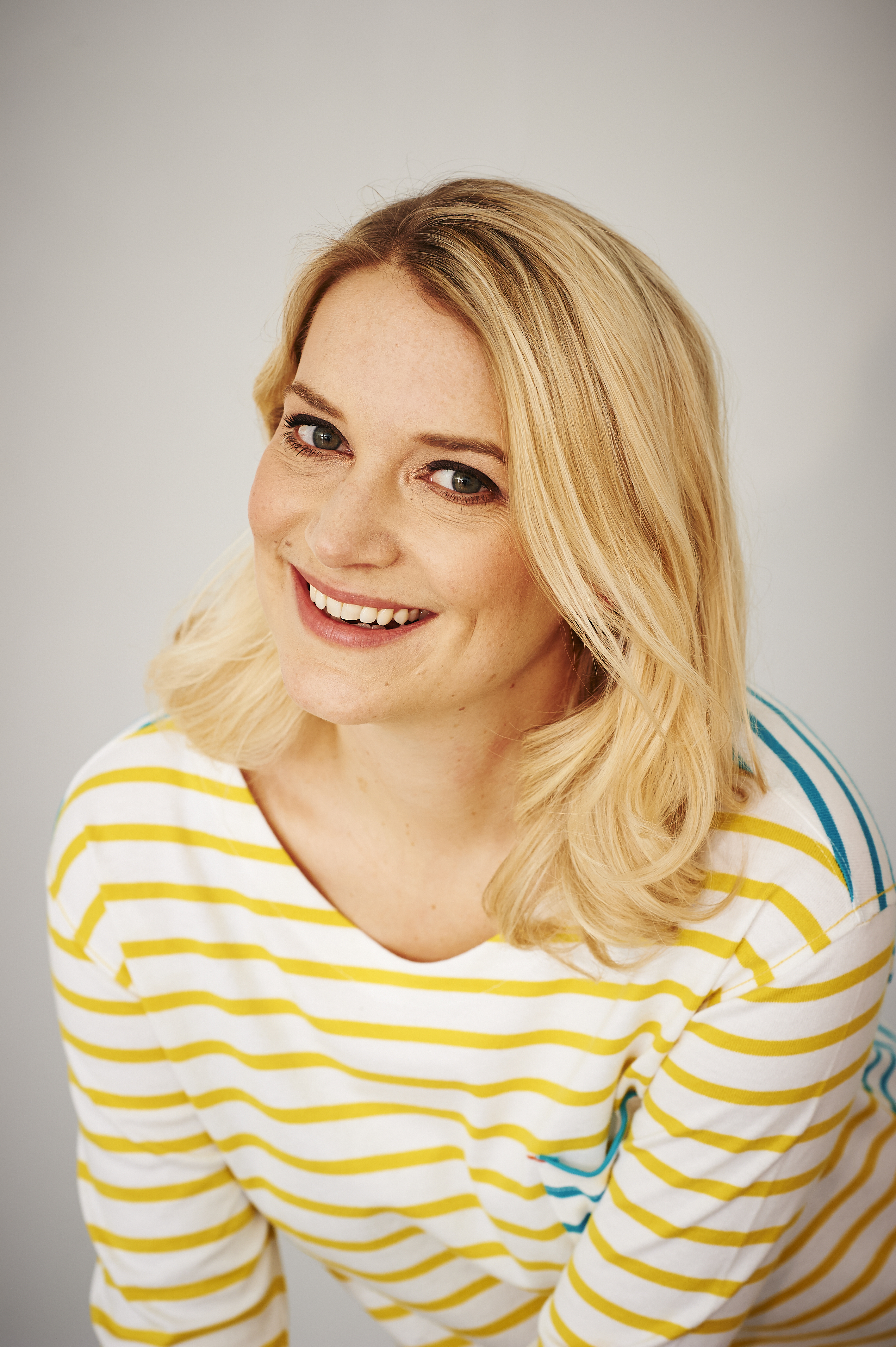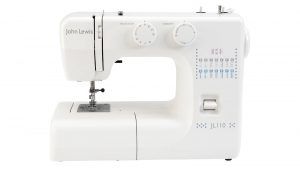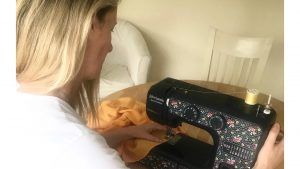How a John Lewis sewing machine reduced this woman’s stress levels – and why crafting could do the same for you


Switching from passive leisure activities to a more active and creative hobby, such as sewing, can have a positive impact on your mental health, says our wellbeing editor.
If there’s one thing we can all agree on, it’s that 2020 has been an exceptionally hard year. Although, even just describing it as “hard” underplays how tough things have been at times. Britain is on the brink of a mental health crisis, with aninternational studyfinding that 41% of the UK population’s mental health is at risk owing to the effects of the pandemic.But can sewing beat stress? At times like these it's worth trying anything. So, it's time toput down the Netflix remote (and that extra large glass of vino!) and plug in one of the best sewing machines instead.
So, if you’ve developed feelings of stress,anxietyand depression, and it’s perhaps something you may never have experienced before, then you’re definitely not alone.But just because sewing may be a simple solution, it doesn’t mean it’s not effective.
It’s time to go back to basics and start looking after ourselves again. AndI’m not only saying that because expert research has shown crafting can help when it comes to stress, anxiety and depression. But, it’s because I’ve spoken to a woman it’s really worked for, and she’s shared her story below.
The best thing about sewing to beat stress? You don’t need to be an expert to reap the benefits. Here’s everything you need to know...
The case for switching to sewing to beat stress
A sewing machine can be a stress saviour, says mum-of-one Ali Horsfall. Just like 11% of other Brits (according to a study by Dr. Oetker Momenti), Ali initially took up sewing as a me-time hobby to help get through lockdown, but the benefits soon began adding up.
“Before I started sewing, my evenings were filled but unproductive,” says Ali. “Like many people who work full-time, I had little time for personal projects. Then lockdown happened and suddenly we had swathes of hours to fill and tons of stress to try to deal with.”
Sign up for the woman&home newsletter
Sign up to our free daily email for the latest royal and entertainment news, interesting opinion, expert advice on styling and beauty trends, and no-nonsense guides to the health and wellness questions you want answered.
At the same time, Ali’s teenage daughter was finding it hard to buy clothes to fit her properly. “She’s very tall and has always struggled to buy skirts and trousers, so I bought a sewing machine and we got cracking on it as a project together. I chose a beginner-friendly machine – the John Lewis & Partners JL110 – and it was perfect for us. It came with simple set-up instructions and was at a price point where it wouldn't be a total disaster if our sewing endeavours ended up being just a whim.”

John Lewis & Partners JL110 Sewing Machine
“At first, the goal was only to make some garments, but I was surprised how therapeutic I found it and how much fun we had doing it together,” says Ali. “We got a real sense of achievement from creating something ourselves. It was also the perfect antidote to my working day spent staring at a screen. When sewing, you're really in the moment and can't think or worry about other things.”

It’s definitely a hobby that Ali won’t be giving up any time soon. “I’ve got the sewing bug now, so there’s no going back,” she says. “Even when life returns to normal after this stressful phase, I’m happy that I’ve got a few new skills. Plus, I know that I can return to my sewing machine whenever I need to relax.”
Why sewing can beat stress, anxiety and depression
So, why does sewing work for stress? For any sceptics out there, there’s some science behind it. One reason sewing can be so good at helping with mental-health issues is because when you really focus on a task, it can create a “flow state”.
“This is a state of total engagement, when you're fully absorbed in what you're doing,” explainspositive health psychologist Miriam Akhtar, author ofThe Little Book of Happiness.
“You may also refer to it as being ‘in the zone’. It's a more active form of recreation, which has more benefits for you than passive leisure like watching TV. It's a deeply satisfying state and a route into 'eudaimonic wellbeing', a sustainable form of wellbeing.”
This is probably the reason why a survey byHobbycraftfound that out of the 95% of people who took up crafting during lockdown, more than half said it felt good for their wellbeing, while 42% admitted it helped them to take their mind off other things.
But, for even more benefits from sewing, you have to push yourself further, even if it’s just a bit. “You need to have a match of challenge and skill or slightly more challenge than skill,” says Miriam. “Too little challenge and it's boring, while too much would make youmore anxious. Crafting and other creative pursuits deliver that. For me, mosaicing is my favourite form of crafting.”
Which types of crafting and hobbies can make a difference to mental wellbeing?
Another major factor as to why a crafting activity, such as sewing, can help reduce feelings of stress, anxiety and depression is because these types ofhobbies for womencan help lower your heart rate.
Most people have a resting heart rate between 60-100 beats per minute (bpm), with an average around 80bpm. Not sure about yours? Getting your hands on one of thebest fitness trackerscan help. A survey spanning several weeks bydiys.comandFitbitfound that crafting hobbies helped lower resting heart rates on participants. These included:
- Knitting: average heart rate 65bpm, with a decrease of 18.75%
- Calligraphy: average heart rate 74bpm, with a decrease of 7.5%
- Painting: average heart rate 77bpm, with a decrease of 3.75%
Adult colouring books:These had a surge in popularity a few years ago, and it’s no wonder why. Research has found thatdaily colouring can help depression symptomsand anxiety after just one week.
Jigsaw puzzles:“Puzzles are a great way to find some me-time, to relax, switch off and escape the stresses of the day,” says Sarah Stevens, jigsaw puzzle expert atRavensburger. “In addition, they give your mind a good workout, too. You use both sides of your brain as you gather, sort and assemble pieces and appreciate the emerging puzzle before you.”
5 tips on how to use a sewing machine for the first time
Want to give it a try? We asked our craft editor, Esme Clemo,to share her top tips on how to get started when using a sewing machine for the first time:
- A manual sewing machine is easier than digital.“Real novice? Go for a manual version, because it’s easier to use. But, if you are more tech-savvy, then a digital machine is a great investment. And especially if you think sewing might turn into a lifelong hobby.”
- Don’t blow your budget.“You don’t have to spend a fortune upfront. There are always ways to expand your sewing machine’s abilities at a later date. For example, a zipper foot is a good addition if you know you’ll be sewing invisible zips.”
- Cotton is the best material for beginners.“All machines can cope with cotton, so get a regular pack of fat quarters (a special cut of fabric available at craft stores) to experiment with. These are good for little projects. Some machines can’t cope with really thick or thin material. So check first if you want to move on to wools and silks.”
- Start with home furnishings.“These are much easier as you don’t need to fit them on to the body. A garment is harder as you (or the person you are making it for) may not fit the standardised measurements on the sewing pattern.”
- Skirts are easier than tops.“For skirts, you only have to think about fitting it to the waist and hips, while dresses deal with bust, shoulders, hips, waist etc. Opt for simple fasteners at first, rather than worrying about inserting zips.”
Don’t delay speaking to your GP if you are experiencing mental-health issues and need support.
Faye M Smith is an award-winning journalist with over 20 years experience in the magazine industry. Her continued work in the area of natural health won her the coveted title of the Health Food Manufacturers’ Association (HFMA) Journalist of the Year Award 2021. Currently Group Health Director across several magazines including woman&home, Woman, and Woman’s Own, Faye specialises in writing about women’s health, especially menopause, relationships and mental health.
-
 Katie Holmes broke an unspoken fashion rule in tights and mules - her shoes are available for less than £100 on Amazon
Katie Holmes broke an unspoken fashion rule in tights and mules - her shoes are available for less than £100 on AmazonThe statement gold kitten heels are a surprisingly versatile spring staple
By Charlie Elizabeth Culverhouse Published
-
 The diet linked to longer and better sleep, revealed by new study
The diet linked to longer and better sleep, revealed by new studyThe study looked at data from tracking apps to see what foods were more likely to lead to better sleep
By Kat Storr Published
